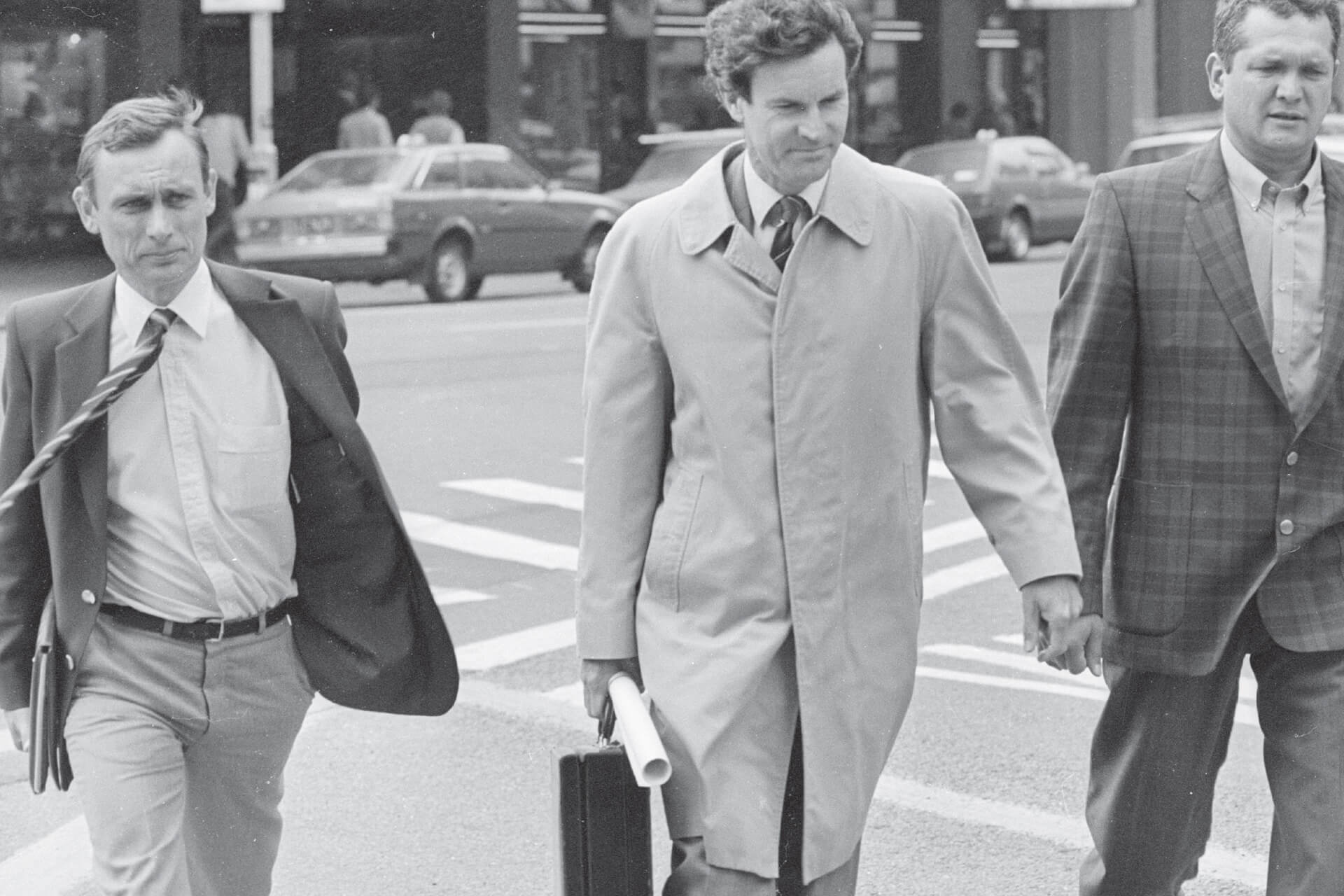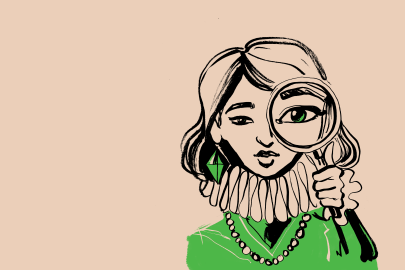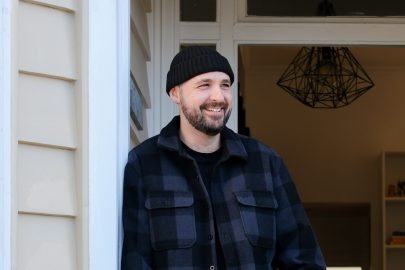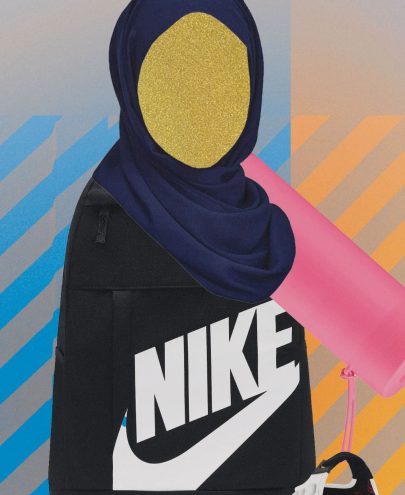Aug 14, 2021 Politics
I have a confession to make: I was once in love with Lenin. I grew up in a house with my grandfather, who was an avowed communist. He’d been in the 1932 Queen St riots, seen blood on the streets, broken windows, mounted police smashing skulls, and he’d taken it all in his stride. He talked of Lenin as a demigod, able to stir a crowd and whip up a storm. One day, I thought, I’d like to do that, too.
The problem was (confession number two) that I was also a Catholic, like my grandmother. So, what was a 12-year-old boy from Newton Gully to do? Every week, I would read the communist newspaper the People’s Voice and, once a month, Russia Today. I found the images of gloriously large Russian women on tractors and carrying enormous bushels of wheat both terrifying and arousing. I would spend hours under the bedsheets with a torch gazing at their beaming faces and huge breasts. The rest, I imagine, you can guess.
When I was 17, I joined the pro-Soviet Socialist Unity Party, a breakaway group from the long-established China-aligned Communist Party. We met every second Sunday in an office on Liverpool St. We watched forbidden Russian movies, like Battleship Potemkin and Alexander Nevsky, which were smuggled into the country in large 16mm reels. They were magnificently inspirational. They were followed by lectures and discussions with businessmen who had recently visited Russia selling linen, bringing back a true picture of Russian life. Starvation, poverty and famine. On the urging of the party, I read the great Russian novels — rich and powerful tales by Tolstoy, Dostoyevsky and Chekov.
By the 60s, I had drifted away from Mother Russia and joined the Labour Party, and over the years I became a confidant and adviser, working with the leaders of New Zealand’s centre-left. In 1999, when the much-admired Labour Party president Michael Hirschfeld died in office, party leader Helen Clark asked me to take up the role. It was a bumpy ride but very successful and I felt humbled following in Hirschfeld’s footsteps. In December that year, Clark became the first woman to be elected prime minister in New Zealand history.
In the hallway outside the prime minister’s office one morning in 2000, a parliamentary clerk handed me an envelope containing 10 pages of galley proofs of a yet-to-be- published book by Greg Hallett, who later became famous for a book alleging that Hitler was a British agent. It was about Vladimir Putin’s alleged visit to New Zealand in the early 80s while he was ascending to the heights of the KGB, the Soviet Union’s main security agency. Putin was based in Germany and Singapore. One of his roles was to report on Australia, New Zealand and Fiji. Australia, as always in those days, was locked in battles with trade unionists and there was frequent port chaos. Fiji was fraught with problems in the sugar industry and with indigenous labour. According to former New Zealand prime minister Geoffrey Palmer on The Service, a 2020 RNZ podcast, the KGB was “extremely active in New Zealand and trying to penetrate our systems” and “was spying on the Labour Party”.
A week after the encounter outside the prime minister’s office, I asked Clark’s loyal and fiercely protective chief of staff, Heather Simpson (known throughout the Beehive as H2; the PM was H1), whether she knew or needed to know everything. I told her that the galley proofs had come to me unsolicited and I hadn’t a clue whether the claims about Putin visiting New Zealand were true or false. Simpson glared at me like the formidable Governess from The Chase and said she would do some checking. I got back word that Putin had indeed been to New Zealand twice, travelling under aliases.
I was suddenly a man on a mission. I realised it was a long shot so I started with former Labour Cabinet minister Warren Freer. Freer and I had worked together on the 1972 election campaign that catapulted Norman Kirk into the prime minister’s job, and I knew that, in 1955, he was the first Western politician to visit China since the communist revolution there six years before. I took early photographs of Putin and asked Freer if he recalled this man, could he remember anything about him? It took a while for Freer to remember, but he did. He thought his name was André, a Bata shoe salesman. He remembered a man exactly like Putin with more hair who asked a lot of questions, loved chocolate biscuits and had “an eye for the ladies”. He recalled André’s interest in the young Helen Clark, a dead ringer for Joan Baez, minus the guitar. I was on my way.
The next step was to visit one of Labour’s greats, the Right Honourable Bob Tizard, Kirk’s deputy prime minister and at that time the longest-serving member in the Labour Party. Tizard had a rapier brain and a memory to match.
He remembered the Bata salesman who asked everyone questions about where socialism was heading in New Zealand, and who the leading advocates and dissenters were. He wanted to know about the unions, and the chances of various politicians, and about the political direction of the country. But Freer couldn’t quite pin it down as being Putin.
I moved on to the doyen of politicians, Jonathan Hunt — Speaker of the House, the longest-serving MP, and one of Clark’s favourites. I took a series of photographs of Putin at different ages. Hunt was clear in his recognition of the young man. He said he’d stayed at the Great Northern Hotel in Queen St, Auckland, and the two had had a drink together there once. He said he liked the young shoe salesman enormously.
Armed with a collection of possible evidence, I called on my old friend James McNeish, who would later go on to write the definitive book on New Zealand espionage, Dance of the Peacocks: New Zealanders in Exile at the Time of Hitler and Mao Tse-tung. McNeish was fascinated by the information and told me he had been working for 20 years trying to uncover the New Zealand spy network of double-agent Rhodes Scholars. Over many glasses of wine, we pieced together the unfortunate fall from grace of Colin Moyle, a Labour Party agriculture minister and potential future leader whose career was destroyed in 1977 by National prime minister Rob Muldoon’s infamous accusation of homosexuality. When the conversation turned to the Russians, McNeish and I worked out that if Putin had come to Wellington and stayed for any length of time, he would have gone to a gym or a dojo, and McNeish knew exactly who I should talk to.
I went to the judo academy at the top of Cuba St and met with the legendary Jako Milne, who had at one time held multiple judo and boxing titles. He’d been there since the 1960s and seemed to me to be a magnificent specimen of preserved old age. Fit and fearless, he must have been 70 when I interviewed him and asked him to recall whether a man who resembled Putin ever came to the gym
His eyes lit up as he looked intensely at the photographs. He said he remembered the guy, that he was like an animal, a real perfectionist. He didn’t want to talk to anyone but trained intensely. He thought he was a German, with blond hair and broken English. His judo whites were bright and immaculate. He looked to be a silent assassin, like a cat on his feet, unforgettable.
“Now you’re telling me this guy runs Russia?” he said. “Jako,” I said, “he now runs the world.”
I kept visiting the past, searching for links to Putin in Auckland. I imagined him coming in again and again, with a new passport, new name. I talked to former prime minister David Lange, who simply said, “Of course, why wouldn’t he?” In true Lange style, he said, “Why don’t you ask Tim Shadbolt? I’m sure the two of them would have had a drink at the Gluepot.”
I also imagined Putin taking a taxi to Mission Bay on a hot summer’s day, taking his shirt off and lying on a towel eyeing the talent.
I started to wonder whether there was any link between the mysterious visitor and the inquiry into the February 1986 sinking of the Soviet cruise liner Mikhail Lermontov in the Marlborough Sounds. The ship had hit rocks while under the control of the Picton harbour-master and chief pilot. Everyone on board survived except a crew member, and the liner sits still at the bottom of Te Anamāhanga/Port Gore. An inquiry was quickly held into the sinking. Every day, a man with a striking resemblance to Putin sat at the back of the courtroom. He was photographed outside the building on Lambton Quay.
The photo is not as clear and sharp as I wanted but the more I magnified it, the more I found the resemblance to Putin’s features identified him as the mysterious courtroom visitor.
In his 2007 book Spies and Revolutionaries: A History of New Zealand Subversion, Graeme Hunt named Bill Sutch, Ian Milner and Paddy Costello as spies. Sutch was Secretary of the Department of Industries and Commerce (1958-65), and in 1975 was put on trial for spying. He was acquitted. Hunt makes it very clear that, in his view, both Sutch and Milner were communist sympathisers and fellow travellers. In his book, he said Putin was in New Zealand in 1987 when Lange kicked Soviet diplomat Sergei Budnik out of the country over his alleged connections with the Socialist Unity Party.
I felt that with the clues coming together, there was still more that I needed to uncover. When New Zealand hosted the Asia-Pacific Economic Cooperation forum conference in September 1999, Putin was here yet again, except this time he was playing himself, as the prime minister of Russia. He was charming and social, greeting President Bill Clinton at the opening of the conference at the then Regent Hotel and later at the leaders’ grand dinner at Auckland Museum. No cover was needed, but I think that a man like Putin might have enjoyed a wander around his old haunts, a stroll down Ponsonby Rd or maybe even a waterfront drink.
In 2017, I was Champion for Auckland — Overseas Investment, and in that role I was asked by a colleague at the University of Auckland political studies department if I would host a high-level Russian delegation. I was flattered, and up for the job. The delegation was led by Alexander Drozdov, executive director of the Boris Yeltsin Presidential Centre in Yekaterinburg. He was joined by his wife, Vera Shevchenko, who had an imaginative title, something like Chairlady of Health and Spirituality of the Russian Nation. These two political power brokers were joined by Alexander Rossel, adviser to the Senator for the Sverdlovsk region. They were all devotees of Yeltsin, the first Russian president, had been part of his inner circle, and were close friends of Putin. I set up meetings with two councillors, New Zealand First leader Winston Peters, Auckland Museum and Auckland Art Gallery, and on the Saturday, I hosted a grand lunch at my beach house out at Karekare.
They wanted to talk about Yeltsin and Russian history, which they knew I liked. I opened a conversation with Drozdov and engaged him with my knowledge of Reply of the Zaporozhian Cossacks, the famous painting in the State Russian Museum in St Petersburg. It is considered one of the greatest paintings in Russian history. The Cossacks, many of them drunk, are brawling and dictating an insulting letter in reply to an ultimatum from the Ottoman Sultan, Mehmed IV. Drozdov was thrilled that I knew about the painting and told me he had commissioned an identical painting with all of his Russian political mates depicted in it. It was in his drawing room in Moscow and Putin loved it.
He told me he and his wife dined with Putin once a month. It was my perfect opportunity. I asked him whether Putin had been in New Zealand as a younger man. His eyes rolled and he burst out laughing. “Of course,” he said. “He is a global man and he has a fondness for New Zealand, your remoteness and your people.” I poured us all a vodka and I felt my mission and my journey had come full circle. I was a happy man.
While the surf roared below, I proposed a toast to Russia and New Zealand and to Putin and his covert visits to this country. I felt I could have passed him on the street buying a pizza in Mission Bay, or spotted him having a drink in Ponsonby. It’s a nice thought. Given all the night- mares of Donald Trump, the frailness of Joe Biden and the wackiness of Boris Johnson, Putin is probably the most powerful man on the planet. I wonder if he ever did have a beer at the Gluepot?
—
This story was published in Metro 431 – Available here in print and pdf.






